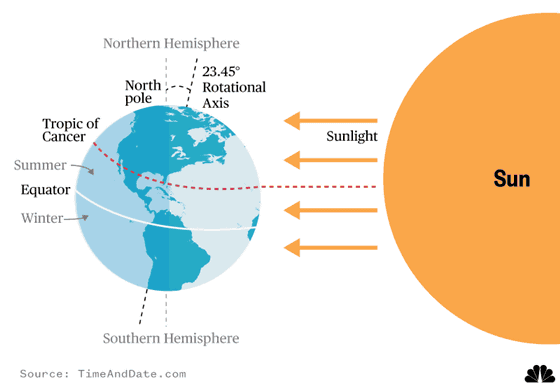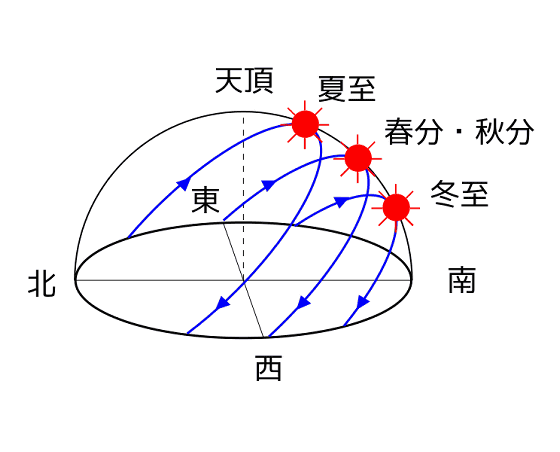What is summer solstice?

" Summer solstice " in 2018 was today 21st June. NBC News explains the scientific mechanism and its historical position of "What is summer solstice?" In the first place.
MACH: The best and latest in Tech & Innovation | NBC News
https://www.nbcnews.com/mach/science/what-summer-solstice-ncna 884991
"Summer solstice" is "day with the longest day (day) in the year". In the northern hemisphere, the summer solstice visits every year around June 22, and in the year 2018 the summer solstice was June 21. In other words, the days were getting longer and longer until June 21, and on the contrary the day continues to shorter and shorter toward the "winter solstice".
So why do sunshine hours have cycles throughout the year, "The reason is that the geographical axis is tilted" is the answer. The Earth orbiting around the sun while rotating, the axis of rotation is tilted about 23.45 degrees relative to the revolving surface. For this reason, in the northern hemisphere the range of exposure to sunlight is wider, that is, the day becomes longer. As you can see, in the summer solstice of the Northern Hemisphere, the Arctic continues to be exposed to the sun constantly, so there will be no time for the sun to settle " White night ", while on the contrary the South Pole will be a " polar night " where the sun will not rise at all.

Since the earth revolves around the sun over a year, the summer solstice visits once a year. And in the northern hemisphere and the southern hemisphere the circumstances are opposite, the summer solstice of the northern hemisphere is the winter solstice of the southern hemisphere, and vice versa. Just as the seasons are opposite in the northern hemisphere and the southern hemisphere, the relationship between the summer solstice and the winter solstice is also opposite.
The summer solstice can be rephrased as "the day with the highest altitude of south middle a year". Summer solstice in English is called "Summer Solstice", but Solstice (solstice) comes from the Latin word which means "sun standing still" (the sun is still rising). It is known from ancient times that the sun comes to the highest position at noon of the summer solstice, and according to one theory it is said to be one of the first astronomical observations in human history.

Examining the summer solstice and winter solstice is synonymous with examining the seasonal cycle and it was indispensable to the life of the ancient people. For this reason, the summer solstice and winter solstice in the calendar are said to have been the most important day of the year.
In addition, some of the ancient historical buildings and monuments scattered throughout the world are thought to be designed to match the sunrise and sunset of the summer solstice. The stone monument " Stonehenge " which formed a circle is one of them. It is said that summer festivals are held as a genealogy of ancient summer solstice ceremonies in various parts of Europe. In Stonehenge recently, the festival of the sunset at the summer solstice was held and thousands of people gathered, but just a few thousand years ago, the summer solstice has become an important day for mankind.

by Slilin
Related Posts:
in Science, Posted by darkhorse_log







